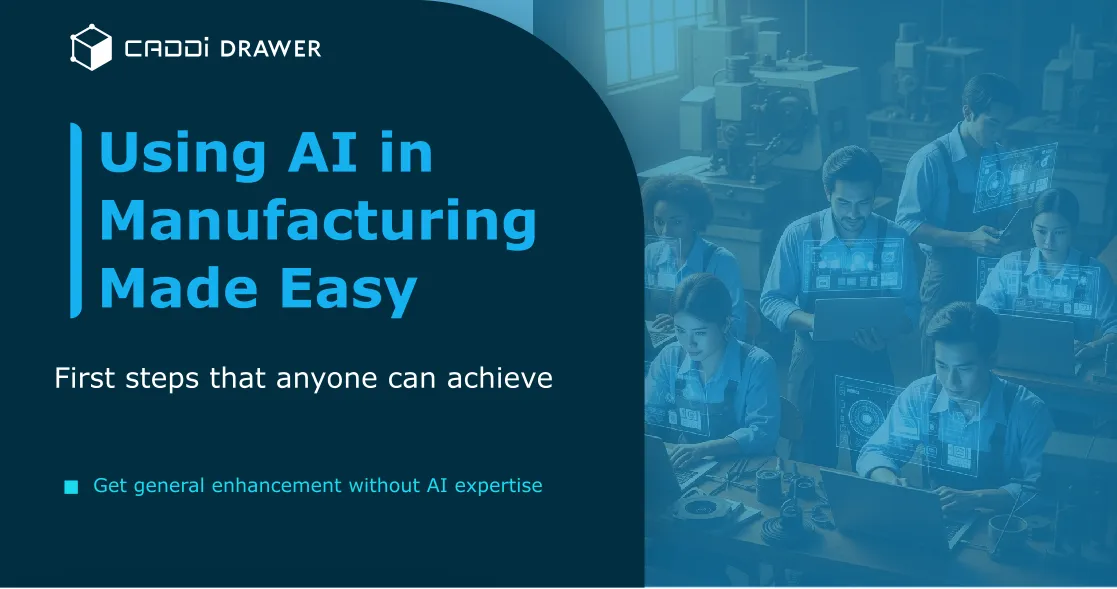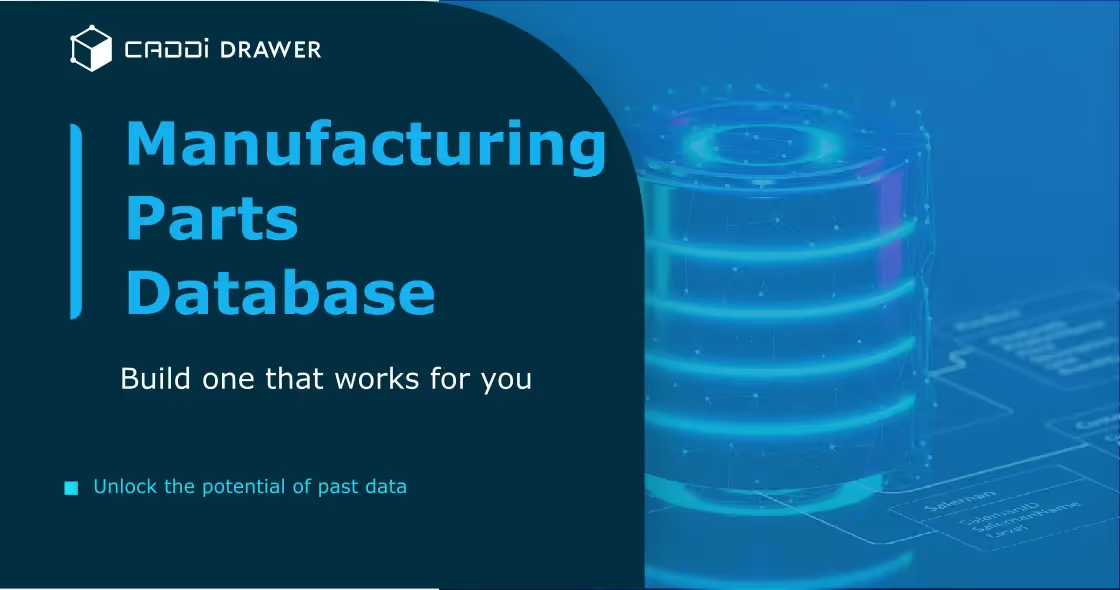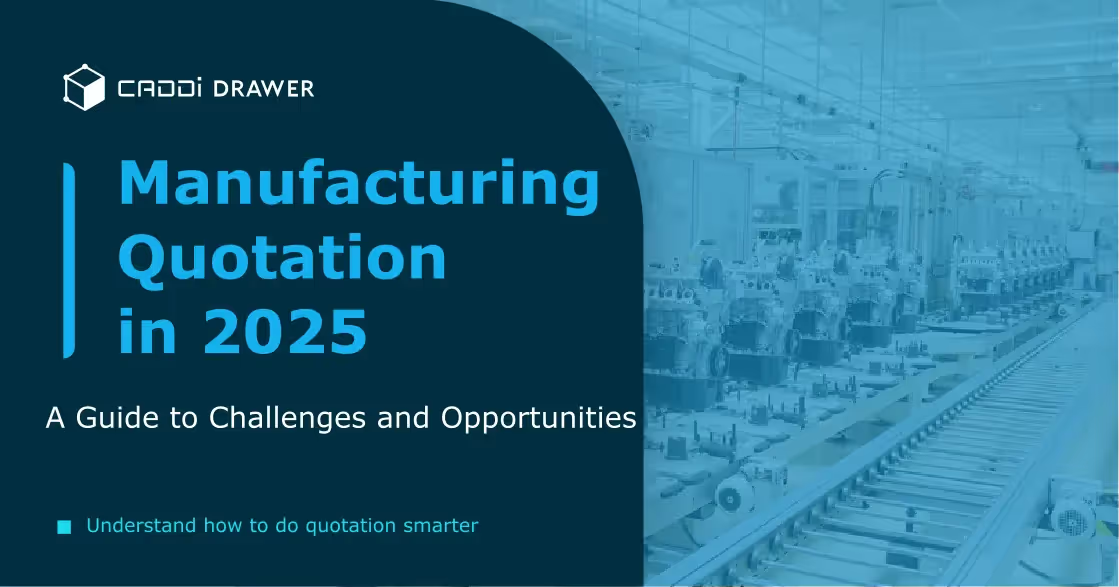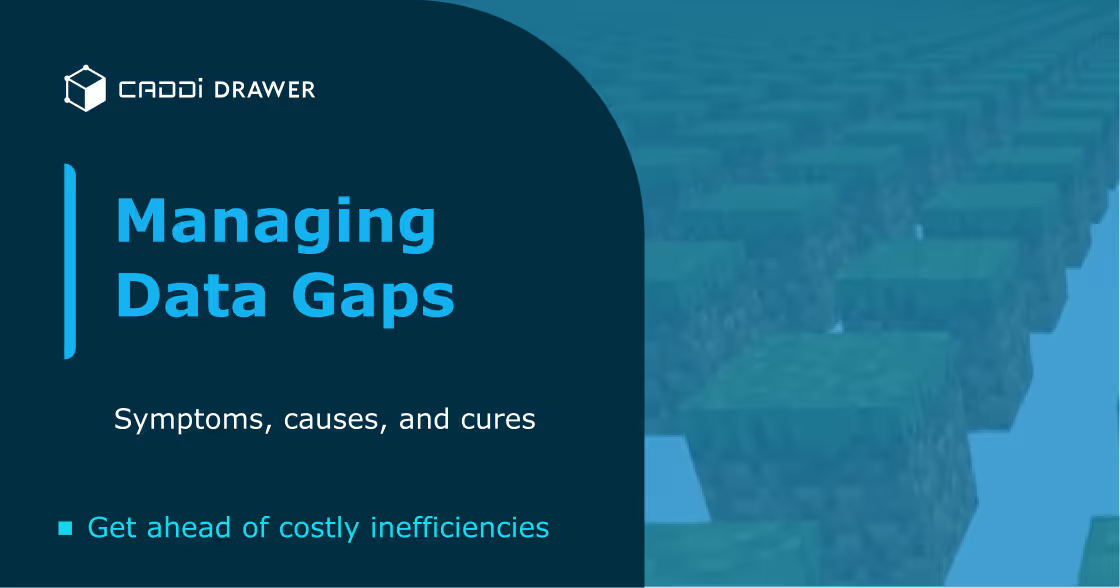AI in Manufacturing for the Rest of Us: Three Practical Applications You Can Implement Without a Team of Data Scientists

Table of Contents

In the dynamic world of manufacturing, the promise of Artificial Intelligence (AI) looms large, often accompanied by visions of complex algorithms and specialized data science teams. However, a significant gap persists between executive-level excitement for AI and the operational-level understanding of how to implement it. Many manufacturing leaders believe AI is crucial for growth and innovation, yet only a limited number have actually deployed AI in products and services. This disparity highlights a crucial need: accessible, high-impact AI applications that don't require massive investment or specialized in-house talent. This is precisely where the concept of "AI in Manufacturing for the Rest of Us" comes into play, offering practical entry points into the world of AI, and solutions like CADDi are making it a reality.
The Hurdles to Implementing AI in Manufacturing
The manufacturing sector faces a confluence of pressures that make the efficient and intelligent use of data a critical priority. These challenges underscore why actionable AI solutions are so sought after:
- Operational-Level Implementation Gap: While executives are keen on digital transformation and AI, practitioners on the plant floor and in procurement offices often struggle with where to start or how to justify the cost of a project. There's a clear demand for "how-to" guides, checklists, and practical playbooks, indicating a need to demystify AI and make it tangible.
- Untapped Unstructured Data and Tribal Knowledge: A vast amount of valuable insights remain buried in unstructured data formats, such as sensor readings, machine logs, customer feedback, and particularly, legacy 2D paper drawings, scanned PDFs, and even handwritten notes. Furthermore, critical industry knowledge often exists as "tribal knowledge" in the minds of experienced professionals, which is prone to being lost when employees retire. Manufacturers desperately need ways to transform this scattered knowledge and data into usable, accessible assets.
- Design Inefficiencies and Cost Uncertainty: Design teams often "reinvent the wheel" due to difficulties in finding and reusing past designs, leading to increased design workload and higher costs. Procurement struggles with fluctuating material prices, supplier estimates, and the sheer volume of data, making accurate cost calculation and effective cost reduction measures challenging. This fragmentation and lack of visibility lead to extensive rework and costly late-stage revisions.
- Cross-Departmental Silos: Critical information flow is often impeded by departments operating in isolation, using disparate tools that lead to designs that are impractical or costly to produce. This lack of seamless information exchange slows down product development and leads to significant inefficiencies.
These challenges highlight a pervasive need for practical, immediate solutions that can deliver measurable ROI without requiring a complete overhaul of existing infrastructure or a specialized data science team.
Three Practical Applications of AI You Can Implement Today
You don't need a massive budget or a team of AI researchers to start leveraging AI in your manufacturing operations. Here are three practical applications, with a focus on how innovative platforms are making them accessible:
- AI-Driven Predictive Maintenance: Instead of waiting for a machine to break down, AI can predict when maintenance is needed. By analyzing data from IoT sensors (like vibration, temperature, and error codes) on machines, AI algorithms can identify anomalies and forecast potential failures. This allows maintenance to be scheduled proactively, preventing costly unplanned downtime and optimizing asset performance. Rolls-Royce, for instance, uses IoT sensors in its aircraft engines for performance monitoring and predictive maintenance, saving airlines millions.
- AI-Powered Visual Quality Control: AI-enhanced machine vision systems can inspect products on the production line in real-time. These systems analyze images to identify defects and trigger immediate corrective actions, reducing waste and ensuring product quality before items reach customers. This application can significantly reduce scrap, rework, and warranty claims by catching issues early.
- AI for Design and Procurement Intelligence: This is arguably the most accessible and high-impact AI application on a practical level because it automates knowledge work, directly addressing the pain points of design engineers and procurement specialists.
- The Problem: Engineers waste hours manually searching for past designs, recreating drawings, or chasing down cost information for quotes. Traditional file systems struggle with the nuances of design similarity, relying on arbitrary part numbers or generic text searches. This leads to "reinventing the wheel," increased costs, and missed opportunities for design reuse and standardization.
The CADDi Solution
CADDi is a turnkey AI data platform that doesn't require complex model training; it's pre-trained on millions of manufacturing drawings and ready for immediate use. It acts as a "digital brain" for your company, centralizing data and breaking down silos.
- Digitizing Unstructured Data: CADDi's patented OCR-based AI technology automatically extracts data from all your drawings, including legacy 2D paper drawings, scanned PDFs, and even handwritten notes. This transforms previously "trapped" and unstructured information into searchable, structured data.
- Patented Similarity Search: Beyond keywords, CADDi's patented similarity search technology understands the geometric shapes and features within drawings. This allows engineers to instantly find dimensionally and functionally similar parts, even from a rough sketch or image. For instance, Nisino Manufacturing saw an 8x speedup on programming tasks by leveraging past programs for similar shapes.
- Linking Data for Context: CADDi connects these past designs with defect and quality reports, production notes, pricing history, supplier data, and other relevant information. This unified view enables engineers to make data-driven decisions on manufacturability and cost from the very beginning. For example, by comparing similar parts with different associated costs, manufacturers can identify price discrepancies and cost reduction opportunities. DCC Automation achieved a 22% reduction in fabricated part spend by using CADDi to evaluate suppliers and find similar parts.
- Democratizing Knowledge & Accelerating Onboarding: This centralized, intelligently linked data democratizes institutional knowledge, making it accessible to new hires without extensive reliance on seasoned staff. Plannet Engineering found that CADDi ensures "the same drawings come out regardless of who does it," improving consistency and quality of work. This significantly reduces onboarding time and empowers junior employees to make strategic decisions.
Conclusion
Taking your first steps into adopting AI in your manufacturing shop can be intimidating. There’s many potential avenues to go down, each requiring their own specialized understanding and implementation.
When it’s uncertain which specialized implementation will work best, aiming for AI tools that give general enhancement is the best place to start. Solutions like CADDi make every aspect of your design and procurement process more cost effective and time efficient. Plus, since it’s a managed 3rd party tool with extensive onboarding and education, you’ll see results without needing to reallocate a ton of time and resources. It provides the perfect foundation for embracing the power of the AI era.
Ready to take your first steps with AI using CADDi? Explore our interactive product tour or book a personalized demo.
In the dynamic world of manufacturing, the promise of Artificial Intelligence (AI) looms large, often accompanied by visions of complex algorithms and specialized data science teams. However, a significant gap persists between executive-level excitement for AI and the operational-level understanding of how to implement it. Many manufacturing leaders believe AI is crucial for growth and innovation, yet only a limited number have actually deployed AI in products and services. This disparity highlights a crucial need: accessible, high-impact AI applications that don't require massive investment or specialized in-house talent. This is precisely where the concept of "AI in Manufacturing for the Rest of Us" comes into play, offering practical entry points into the world of AI, and solutions like CADDi are making it a reality.
The Hurdles to Implementing AI in Manufacturing
The manufacturing sector faces a confluence of pressures that make the efficient and intelligent use of data a critical priority. These challenges underscore why actionable AI solutions are so sought after:
- Operational-Level Implementation Gap: While executives are keen on digital transformation and AI, practitioners on the plant floor and in procurement offices often struggle with where to start or how to justify the cost of a project. There's a clear demand for "how-to" guides, checklists, and practical playbooks, indicating a need to demystify AI and make it tangible.
- Untapped Unstructured Data and Tribal Knowledge: A vast amount of valuable insights remain buried in unstructured data formats, such as sensor readings, machine logs, customer feedback, and particularly, legacy 2D paper drawings, scanned PDFs, and even handwritten notes. Furthermore, critical industry knowledge often exists as "tribal knowledge" in the minds of experienced professionals, which is prone to being lost when employees retire. Manufacturers desperately need ways to transform this scattered knowledge and data into usable, accessible assets.
- Design Inefficiencies and Cost Uncertainty: Design teams often "reinvent the wheel" due to difficulties in finding and reusing past designs, leading to increased design workload and higher costs. Procurement struggles with fluctuating material prices, supplier estimates, and the sheer volume of data, making accurate cost calculation and effective cost reduction measures challenging. This fragmentation and lack of visibility lead to extensive rework and costly late-stage revisions.
- Cross-Departmental Silos: Critical information flow is often impeded by departments operating in isolation, using disparate tools that lead to designs that are impractical or costly to produce. This lack of seamless information exchange slows down product development and leads to significant inefficiencies.
These challenges highlight a pervasive need for practical, immediate solutions that can deliver measurable ROI without requiring a complete overhaul of existing infrastructure or a specialized data science team.
Three Practical Applications of AI You Can Implement Today
You don't need a massive budget or a team of AI researchers to start leveraging AI in your manufacturing operations. Here are three practical applications, with a focus on how innovative platforms are making them accessible:
- AI-Driven Predictive Maintenance: Instead of waiting for a machine to break down, AI can predict when maintenance is needed. By analyzing data from IoT sensors (like vibration, temperature, and error codes) on machines, AI algorithms can identify anomalies and forecast potential failures. This allows maintenance to be scheduled proactively, preventing costly unplanned downtime and optimizing asset performance. Rolls-Royce, for instance, uses IoT sensors in its aircraft engines for performance monitoring and predictive maintenance, saving airlines millions.
- AI-Powered Visual Quality Control: AI-enhanced machine vision systems can inspect products on the production line in real-time. These systems analyze images to identify defects and trigger immediate corrective actions, reducing waste and ensuring product quality before items reach customers. This application can significantly reduce scrap, rework, and warranty claims by catching issues early.
- AI for Design and Procurement Intelligence: This is arguably the most accessible and high-impact AI application on a practical level because it automates knowledge work, directly addressing the pain points of design engineers and procurement specialists.
- The Problem: Engineers waste hours manually searching for past designs, recreating drawings, or chasing down cost information for quotes. Traditional file systems struggle with the nuances of design similarity, relying on arbitrary part numbers or generic text searches. This leads to "reinventing the wheel," increased costs, and missed opportunities for design reuse and standardization.
The CADDi Solution
CADDi is a turnkey AI data platform that doesn't require complex model training; it's pre-trained on millions of manufacturing drawings and ready for immediate use. It acts as a "digital brain" for your company, centralizing data and breaking down silos.
- Digitizing Unstructured Data: CADDi's patented OCR-based AI technology automatically extracts data from all your drawings, including legacy 2D paper drawings, scanned PDFs, and even handwritten notes. This transforms previously "trapped" and unstructured information into searchable, structured data.
- Patented Similarity Search: Beyond keywords, CADDi's patented similarity search technology understands the geometric shapes and features within drawings. This allows engineers to instantly find dimensionally and functionally similar parts, even from a rough sketch or image. For instance, Nisino Manufacturing saw an 8x speedup on programming tasks by leveraging past programs for similar shapes.
- Linking Data for Context: CADDi connects these past designs with defect and quality reports, production notes, pricing history, supplier data, and other relevant information. This unified view enables engineers to make data-driven decisions on manufacturability and cost from the very beginning. For example, by comparing similar parts with different associated costs, manufacturers can identify price discrepancies and cost reduction opportunities. DCC Automation achieved a 22% reduction in fabricated part spend by using CADDi to evaluate suppliers and find similar parts.
- Democratizing Knowledge & Accelerating Onboarding: This centralized, intelligently linked data democratizes institutional knowledge, making it accessible to new hires without extensive reliance on seasoned staff. Plannet Engineering found that CADDi ensures "the same drawings come out regardless of who does it," improving consistency and quality of work. This significantly reduces onboarding time and empowers junior employees to make strategic decisions.
Conclusion
Taking your first steps into adopting AI in your manufacturing shop can be intimidating. There’s many potential avenues to go down, each requiring their own specialized understanding and implementation.
When it’s uncertain which specialized implementation will work best, aiming for AI tools that give general enhancement is the best place to start. Solutions like CADDi make every aspect of your design and procurement process more cost effective and time efficient. Plus, since it’s a managed 3rd party tool with extensive onboarding and education, you’ll see results without needing to reallocate a ton of time and resources. It provides the perfect foundation for embracing the power of the AI era.
Ready to take your first steps with AI using CADDi? Explore our interactive product tour or book a personalized demo.
.svg)



.svg)
.svg)
.svg)









